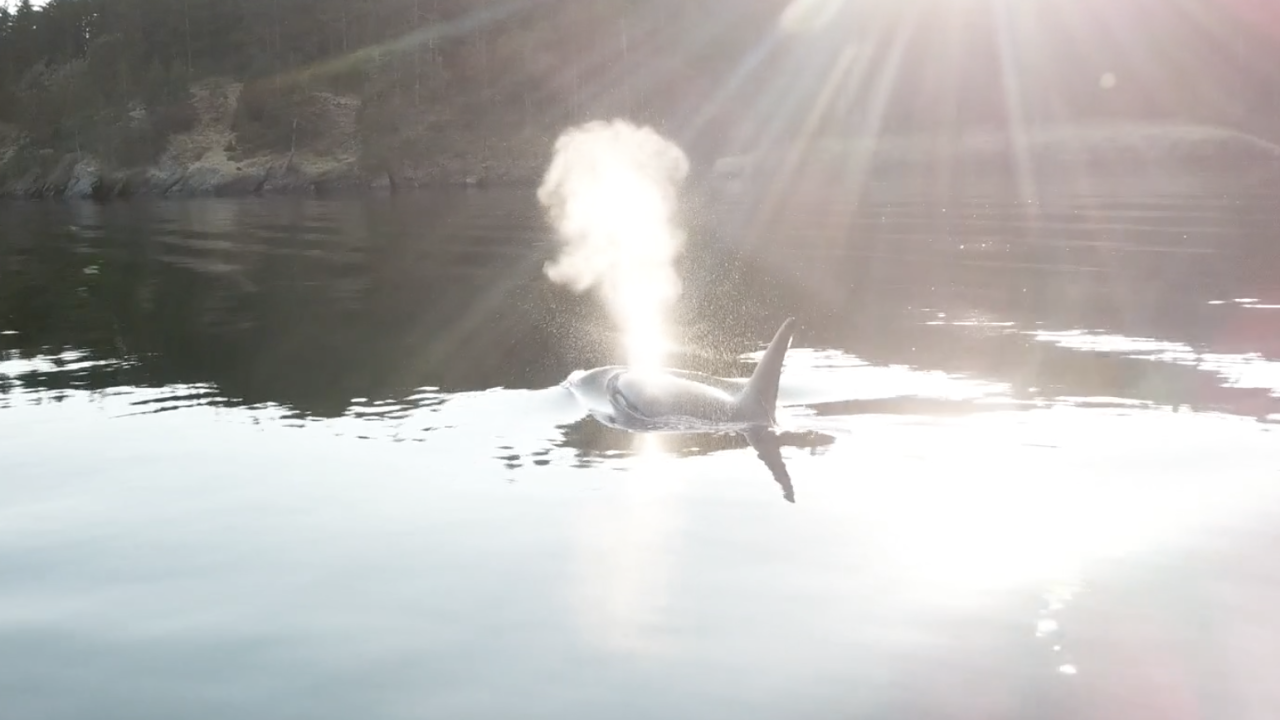
A Non-Invasive Tool For Collecting Killer Whale Breath Samples
Drones can be powerful tools in gathering important health data about wildlife, including marine species like the Salish Sea’s endangered killer whales. Scientists have already established the benefits of collecting breath samples to monitor orca health, but we wanted to scientifically understand if it is less invasive than previous sampling methods–namely the use of a long pole with a petri dish extended from a nearby boat toward the whale’s blowhole.
A new study published in the peer-reviewed journal, Marine Mammal Science, led by SeaDoc Society Research Assistant Catherine Lo, answered that question by analyzing more than 1,000 drone-collected killer whale breath samples.
In the new study–a collaboration between SeaDoc Society, NOAA, Center for Whale Research, and San Diego Zoo Wildlife Alliance–very few behavioral reactions to the drone were observed, and those seen typically reflected a basic awareness rather than avoidance. This research helps support that drones, also referred to as Uncrewed Aerial Vehicles (UAVs), can be a valuable and lower-impact tool to remotely collect health samples that are vital to the conservation of orcas in the Salish Sea.
With only 70+ Southern Resident Killer Whales remaining in the wild, it’s important that efforts to save the species don’t add to the problem, and it’s important that our methods be studied scientifically rather than through casual observation.
The use of professionally flown research drones will reduce the need for close boat approaches that can disturb orcas, which communicate and hunt using underwater acoustics. All UAVs in the study were piloted by trained and permitted professionals following strict distance guidelines.
Thanks to NOAA NMFS, the Rose Foundation, United Parks and Resorts, and the National Fish and Wildlife Foundation through the Pacific Marine Mammal Center for funding this work. Additional funding for data processing, data analysis, manuscript writing, and page charges was provided by the SeaDoc Society, a program of the Karen C. Drayer Wildlife Health Center, University of California, Davis School of Veterinary Medicine. The San Diego Zoo Wildlife Alliance and the Center for Whale Research provided in-kind support.
